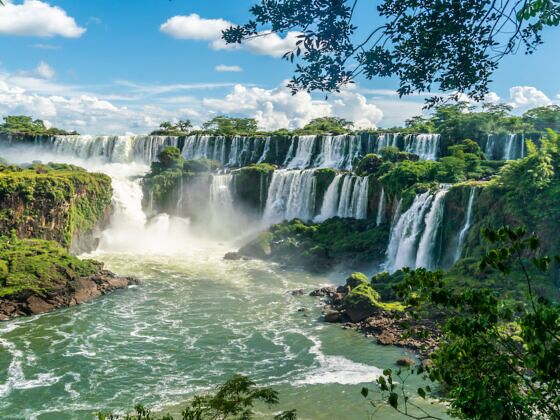Located on the border between Argentina and Brazil, Iguazu Falls is one of the most incredible natural wonders in South America, and often considered to be the largest waterfall in the world. With its thundering cascades, lush rainforest setting, and unmatched views, it’s no wonder why these waterfalls have been attracting tourists from all over the world for centuries.

Iguazu Falls Is One of the Largest Waterfalls in the World, With 275 Separate Falls
@matadornetwork #IguazuFalls is on the border of #Argentina and #Brazil 🎥 @Chasing themost beautiful sce #waterfalltok #dontgochasingwaterfalls ♬ rufus du sol innerbloom – flwhney
Iguazu Falls has been attracting visitors since pre-Colombian times when indigenous people first settled in the area. The name “Iguazu” comes from the local Guarani language, which translates to “great waters”—a fitting description. In addition to its natural beauty, Iguazu is also known for its fascinating history; during World War II, it served as a refuge for hundreds of European Jews fleeing Nazi Germany who sought asylum in Argentina and Brazil.
The falls are divided into two sections – Argentine and Brazilian – each offering unique views of the falls. Both sides offer access to trails, observation decks, and boat tours that will take you up close to the falls. The main difference between them is that on the Argentine side, there are more opportunities for hiking and exploring while on the Brazilian side, you get a much better overall view of all 275 individual waterfalls from a single spot. Its impressive height (640 feet) and width (1.8 miles) make it one of the largest waterfalls in the world. The falls are surrounded by lush vegetation and tropical wildlife, making it a great spot for nature lovers and bird watchers alike. Visitors can explore trails that wind through the rainforest or take a boat tour to get up close to the powerful cascades.
If you’re planning on spending more than just a day exploring the falls, there are plenty of great accommodations located nearby. In Argentina, the town of Puerto Iguazú offers a variety of hotels, cabins, and hostels for every budget. You can also find great options across the border in Brazil at Foz do Iguaçu. Both towns are conveniently located near all of the major attractions in the area and offer plenty of restaurants and bars too. Many tour operators have package deals that include transportation from your hotel or airport as well as tickets for any attractions you may choose to visit. If you’d rather go it alone, there’s plenty of public transportation available from both Puerto Iguazú and Foz do Igauçu that will take you directly to most major attractions in both countries.